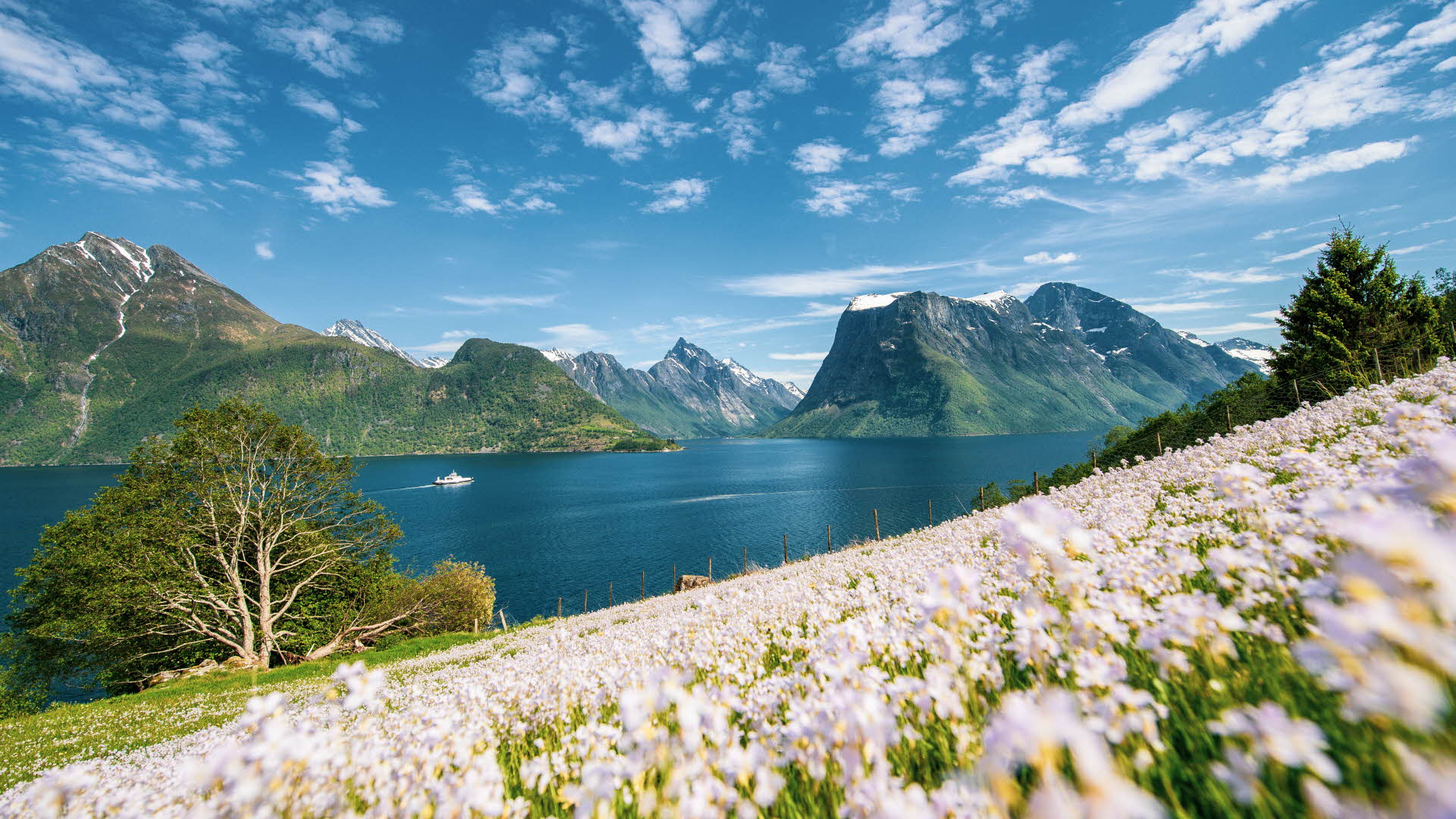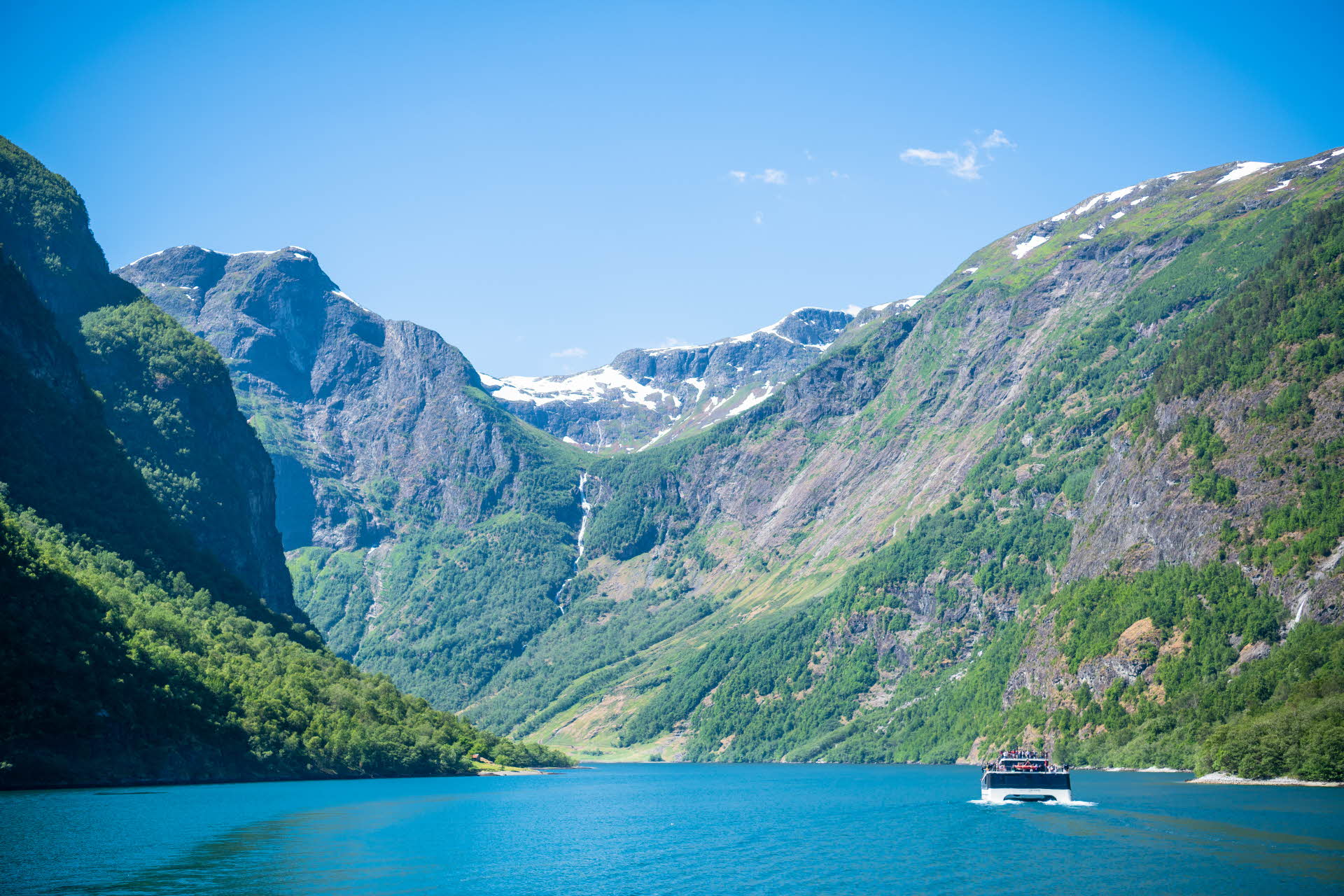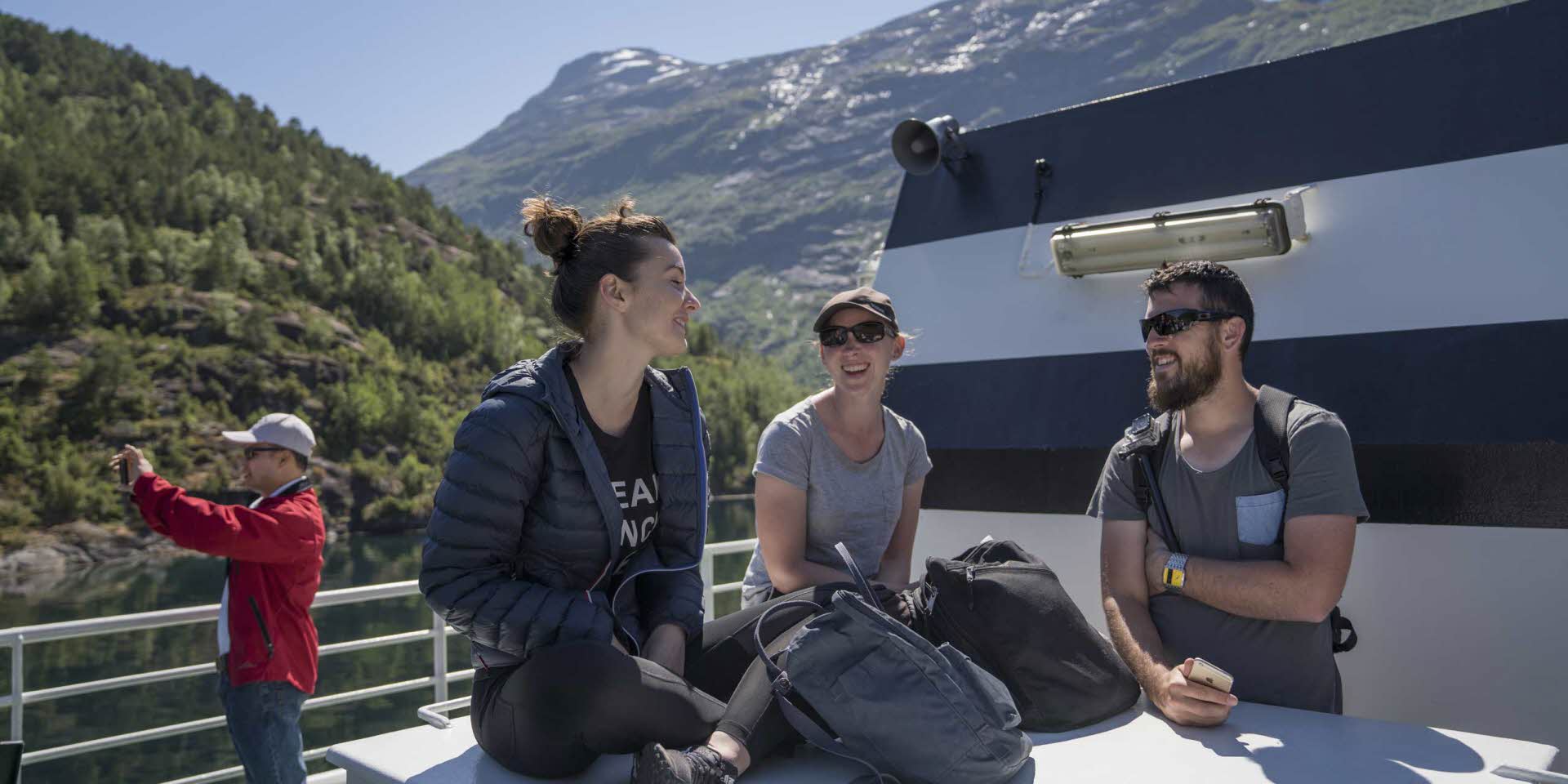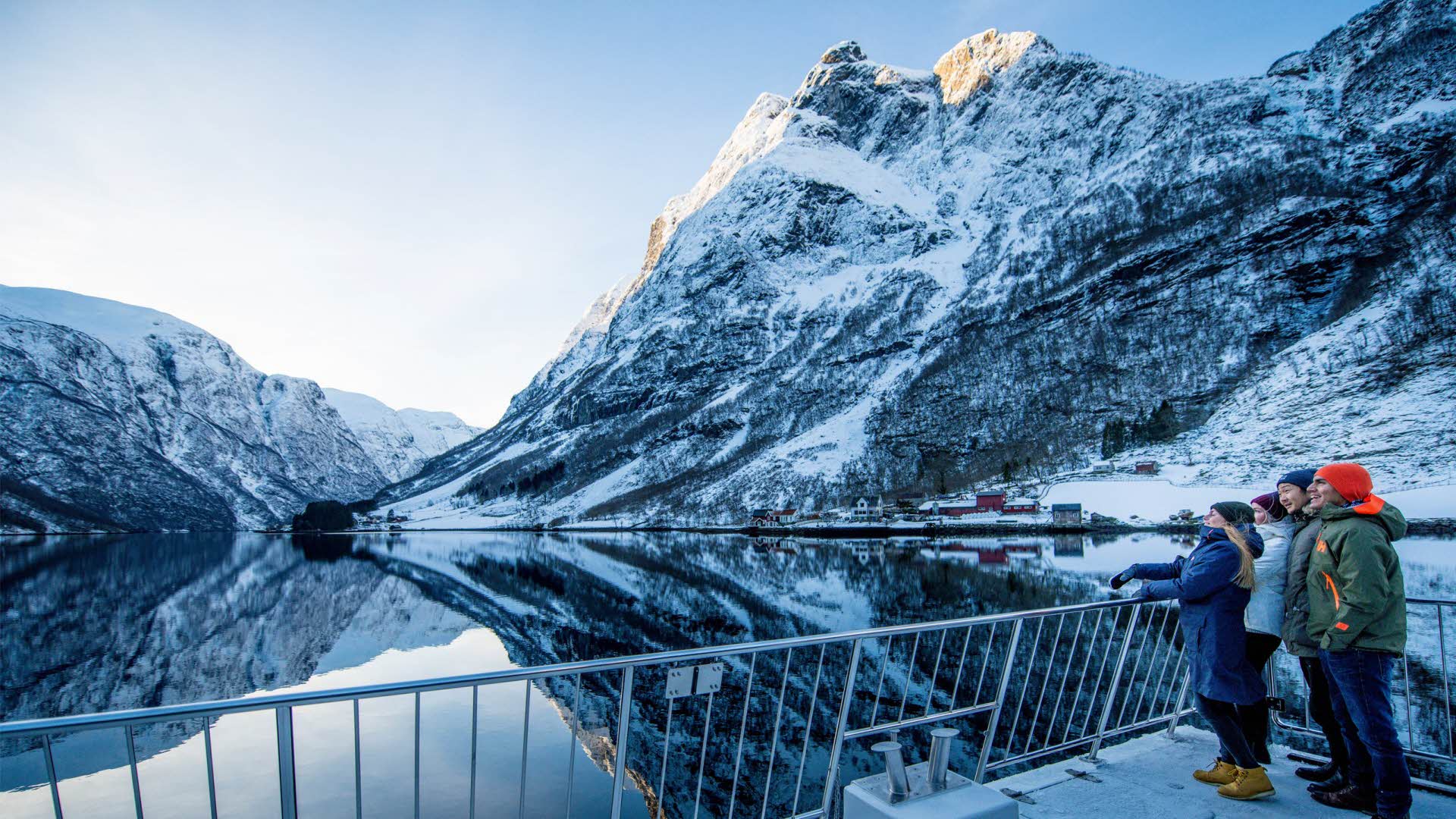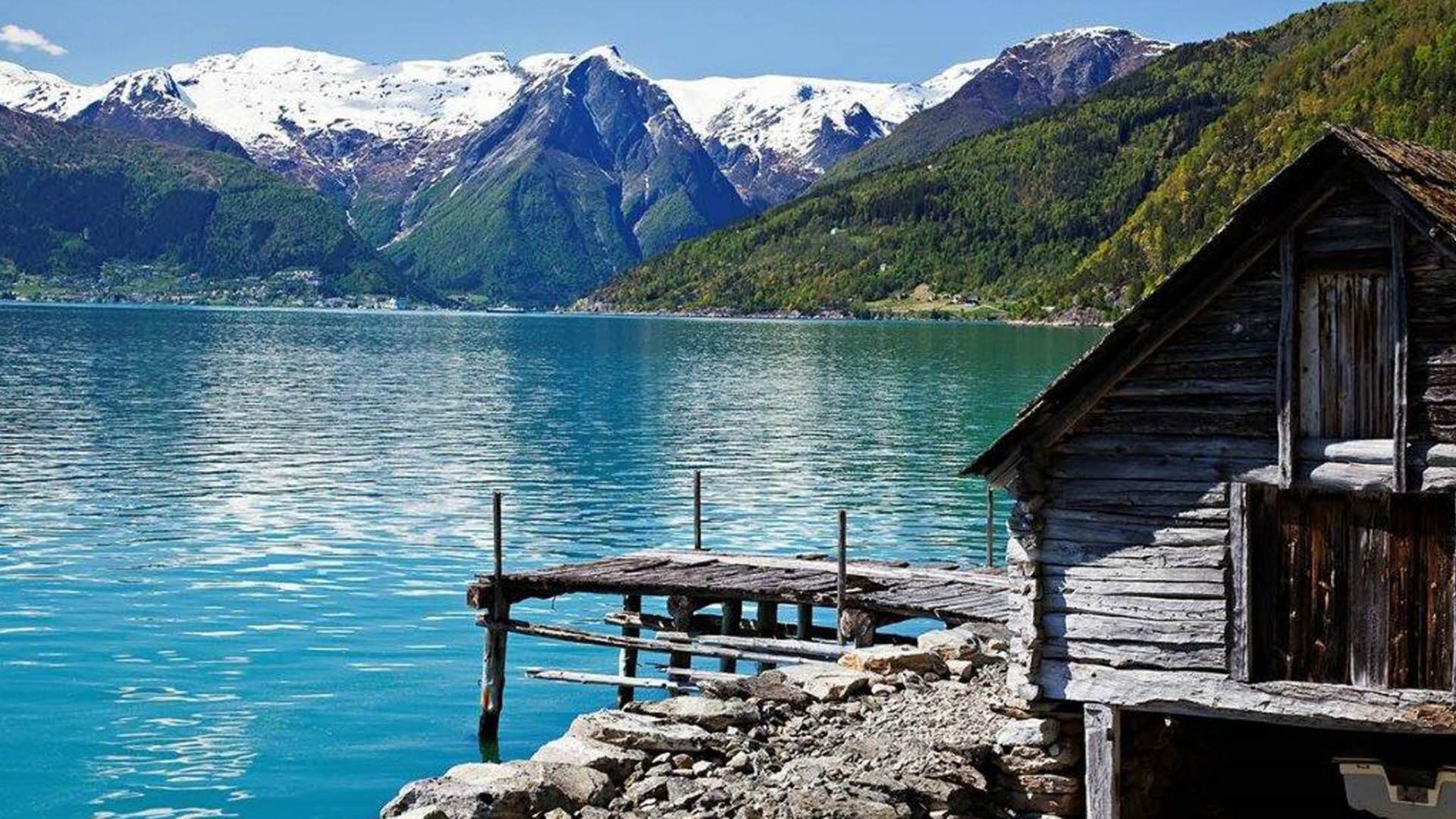The deep, blue fjords of Norway which cut through wild mountains and stunningly beautiful landscapes are quite unlike anywhere else in the world. Of course, fjords are not just a Norwegian phenomenon. Other mountain regions around the world that have experienced ice ages normally have fjords too. However, many of the ice-free and most spectacular fjords can be found in Norway. The most famous of these are located in Western Norway too.
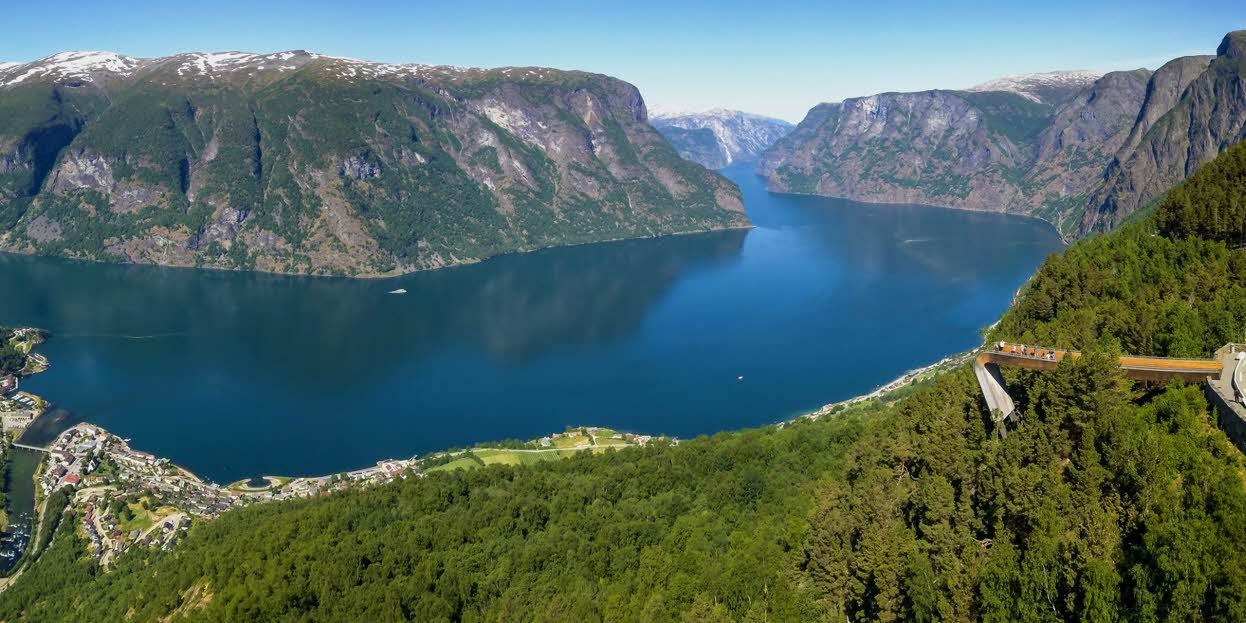
What is a fjord?
A fjord is a story of water, ice and mountains. Fjords are long, narrow inlets with steep sides or cliffs. They are formed through glaciers deepening existing valleys, and water and ice gradually wearing down the mountain masses.
Unlike flowing water, glaciers can erode below sea level. Under the ice, stones and gravel are dragged along underneath and inside the glacier. In this way, the glacier acts like an enormous piece of sandpaper.
In Norway, we have had a total of 40 ice ages of varying durations. During each of the ice ages, ice, meltwater and gravel have worn away the rock. The result after each ice age is deeper and deeper valleys. The glaciers, water and gravel eventually carve out such a deep valley that the sea starts to flood in. This is how the Norwegian fjords were created.
Around 12,000 years ago, the ice retreated from Norway's largest fjord, Sognefjord. The result is the awe-inspiring fjord landscape that you see today.

Fjords and glaciers
Fjords can be very deep. Sognefjord is 1308 metres deep at its deepest, for example. When you add on the height of the surrounding mountains, you can get some idea of the enormous forces that have created and shaped the fjords we see today.
In some areas, glaciers still remain on land after the last ice age. These glaciers are both growing and retreating. Some of these glaciers were growing until the 1980s, but have now shrunk in both thickness and extent again.
If you see an ice-green fjord, it means there is a glacier nearby. Here, the saltwater contains a lot of meltwater from the glaciers. The particles in the meltwater help give the fjord a beautiful emerald colour.
If you go to the uppermost reaches of Fjærlandsfjord, a fjord arm which projects out from Sognefjord, you can also get close to Norway’s largest glacier, Jostedalsbreen, where you can visit the Norwegian Glacier Museum.
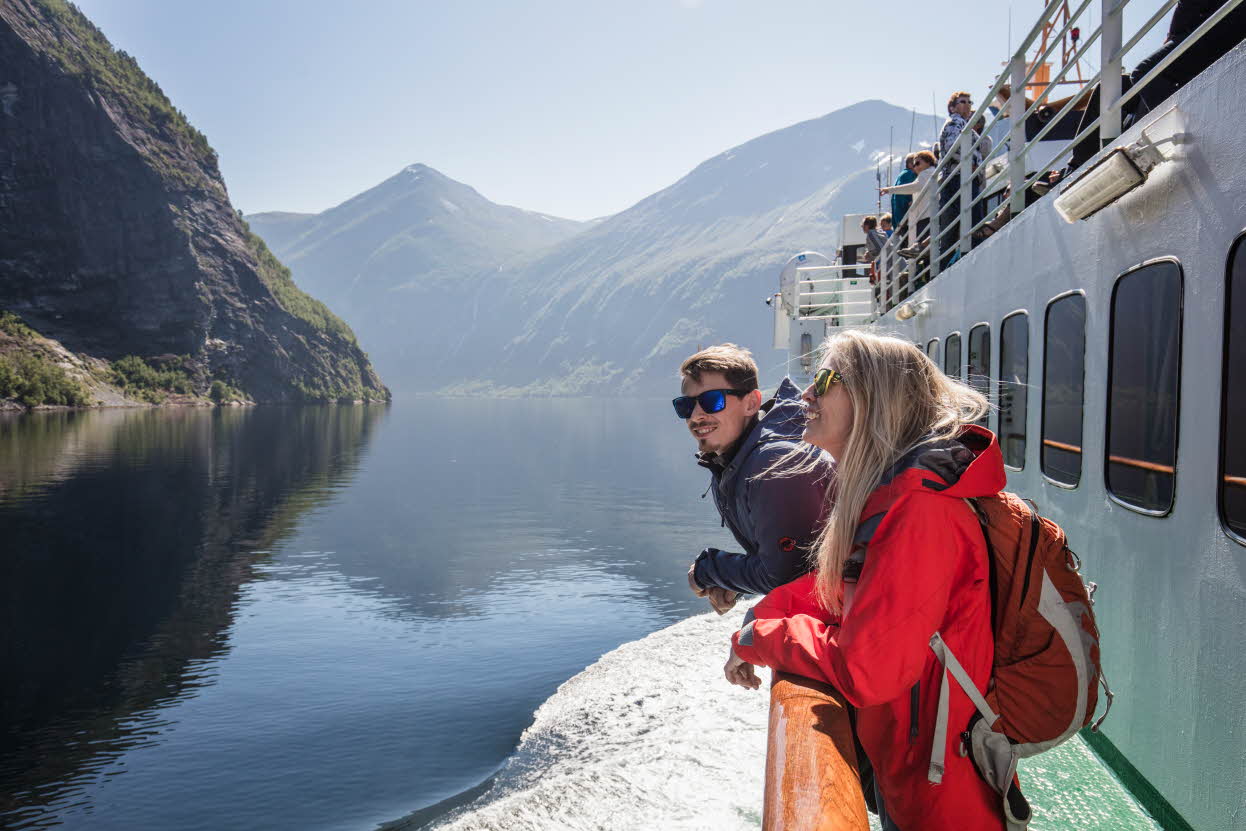
Fjord Norway
Western Norway is best known as "Fjordland". The region is famous for its dramatic scenery, where the fjords are carved into the surrounding mountains. Over millions of years, ice and water have carved deep into the land masses, creating a labyrinth of valleys above and below water. Today, the wild and untamed landscape has become a magnet for tourists from all over the world.
Norway has over 1,700 named fjords dotted along the 57,000km-long Norwegian coast. Many of these fjords extend in from the west coast of Norway. This area is also home to two fjords featured on UNESCO’s World Heritage List: Nærøyfjord and Geirangerfjord.
These fjords are two of Norway's most popular tourist destinations, and it is not hard to see why. Steep mountainsides plummet into the glittering fjords, imposing waterfalls plunge straight down into the fjord, majestic and unspoiled nature and picturesque tiny villages and farms, clinging to the mountainside. It's a spectacle taken straight from the pages of a fairytale!
Nærøyfjord is narrow and surrounded by mountains towering over 1,000 metres above sea level. Geirangerfjord has fantastic vantage points from up high. From the fjord, you can get close to some of the fjord's beautiful waterfalls and tiny farms, which are still inhabited today.
Want to find out more about the most beautiful fjords of Norway? Here are some facts about five of the country's finest fjords.
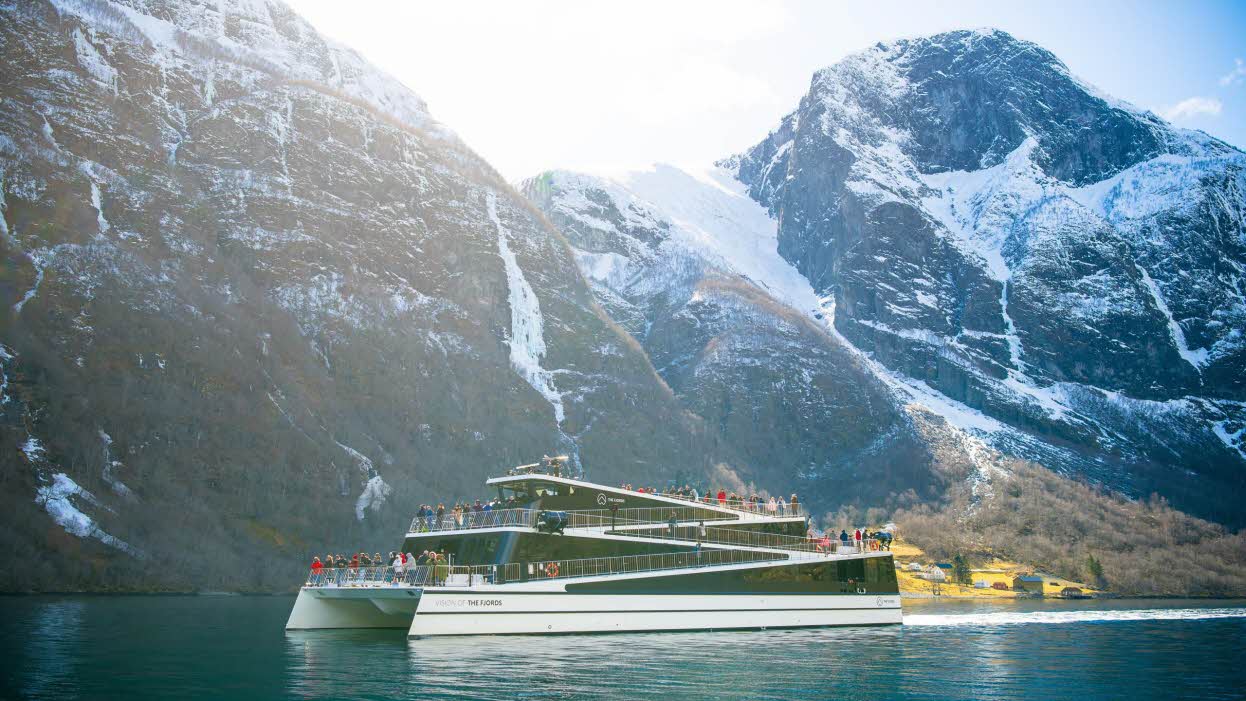
1. Nærøyfjord — A long and beautiful UNESCO-listed fjord
Nærøyfjord is beautiful at any time of the year. The fjord has repeatedly been voted one of the world's most beautiful places to visit. US TV channel CNN included Nærøyfjord, along with Geirangerfjord, in their top 10 list of the natural wonders of the world.
National Geographic magazine has previously voted the fjord "The best unspoiled travel destination in the world". So it’s no surprise that the fjord features on UNESCO’s World Heritage list.
Nærøyfjord and its surrounding mountains are a breathtaking sight for anyone to behold.
At the head of Nærøyfjord, you will find the village of Gudvangen, where you can also visit the Viking village of Njardarheimr. Fjord cruises depart for both Sognefjorden and Flåm via Aurlandsfjord. The cruise offers many breathtaking sights, including cascading waterfalls and idyllic little villages where it is hard to believe anyone can actually live.
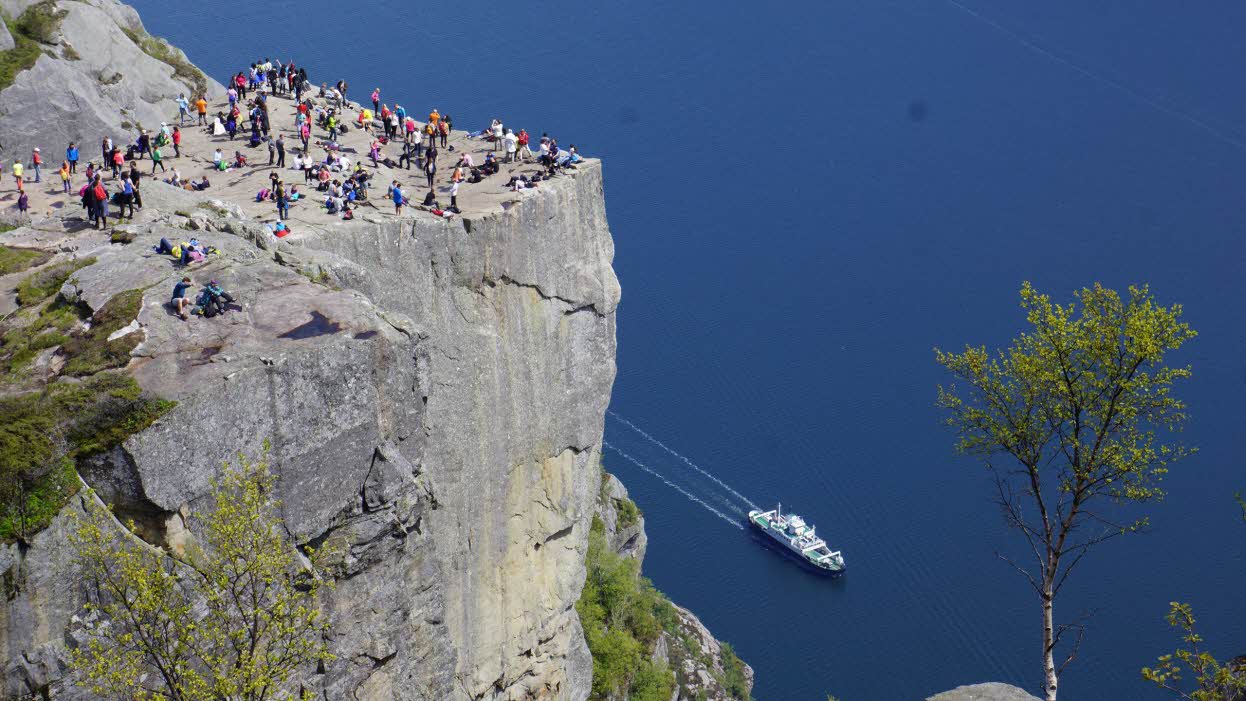
2. Mighty Lysefjord
Lysefjord, which is over 40km long, has carved its way into the mighty mountain massif. The fjord is quite a sight from the water, but it is perhaps even more impressive when viewed from above. The two best-known attractions along the fjord are the mountain plateaus of Preikestolen and Kjerag.
Every year, over 30,000 visitors visit Preikestolen. From the mountain plateau, the cliff faces plunge vertically down to the sea, providing a dramatic spectacle. Preikestolen has even topped Lonely Planet’s list of the world’s “Most Breathtaking Viewing Platforms”. In 2017, the mountain plateau was awarded first place in CNN’s list of natural wonders.
Preikestolen is also the site of breakneck stunts by Tom Cruise in the most recent “Mission: Impossible” movie in 2018 (Fallout).
Lysefjord's other famous rock formation, Kjerag, is more challenging to reach on foot than Preikestolen. From this mountain plateau, the mountainsides plunge a spectacular 1084 near-vertical metres down to Lysefjord. Kjerag is a popular destination for base jumpers from around the world.
You will also find Kjeragbolten here, one of Norway's most photographed attractions. Kjeragbolten is an enormous boulder sandwiched between two rock faces. Daring tourists walk out onto the rock itself at Kjeragbolten, a favourite photo opportunity for visitors.
Lysefjord is easy to reach from Stavanger. If you have a day or two spare, you could also go on a day cruise on Lysefjord. If you have more time available, you could walk up to Preikestolen or Kjerag.
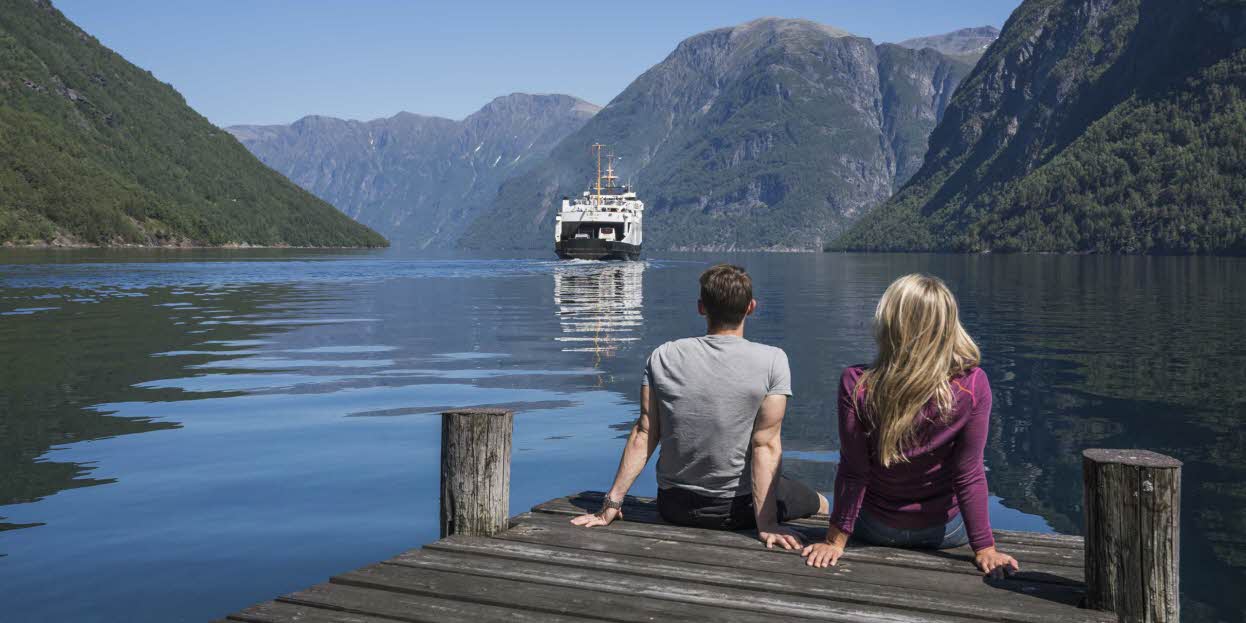
3. Geirangerfjord — A picture postcard from Norway
If you have seen those picture postcards from Norway showing a beautiful bluey-green fjord, surrounded by steep mountains with waterfalls plunging into the water, it may well have been Geirangerfjord that you saw. It is often called the ‘Jewel of the Fjords’ and is much-loved by tourists, both from Norway and elsewhere. This scenic wonder of a fjord features in UNESCO’s World Heritage List, in good company with other gems such as Nærøyfjord, Bryggen in Bergen and Urnes Stave Church in Luster, situated near the shore of Lustrafjord, an arm of Sognefjord.
A cruise on Geirangerfjord will take you close to both nature and culture — everything that led the fjord to be included in UNESCO’s World Heritage List. Wild waterfalls cascade down from steep, towering mountains, while lower down on the flanks of the mountains, you'll see tiny farms and houses clinging to the mountainside.
You can see all this close up if you visit Skageflå farm, which can be reached on foot from Geiranger, or by boat followed by a walk up a short, steep path from the fjord.
If you get up high to Skageflå or one of the many other viewpoints, you can see the awe-inspiring UNESCO-listed fjord from its most spectacular side. From above. Another fine viewpoint is the Geiranger Skywalk on Dalsnibba.
If you have some time to spare in Geiranger, you can take trips inland to some of Norway's finest mountains. There is snow all year round here, and you can even have a snowball fight on a hot summer’s day!
Norway's most spectacular road, Trollstigen, is right next to Geiranger. An excursion along this road will set your pulse racing, whether you are walking, cycling or travelling by car.
If you would like to find out more or go on a fjord cruise on Geirangerfjord, you will find all the information you need here.
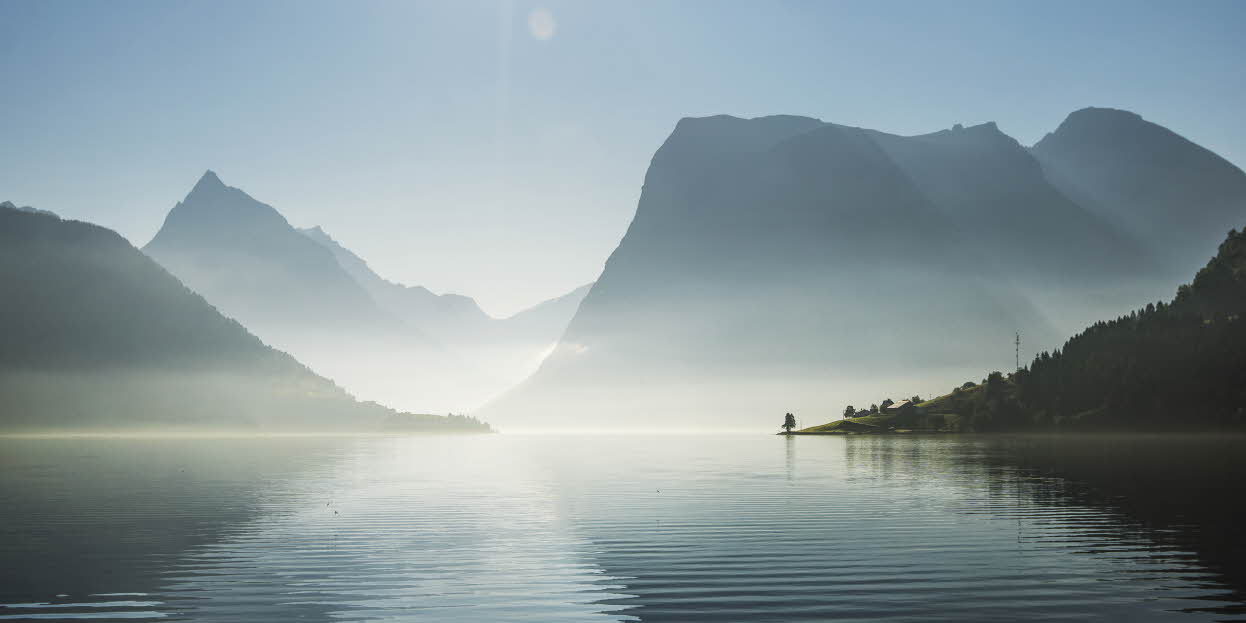
4. Hjørundfjord – Secret jewel of the Sunnmøre Alps
Hidden away, Hjørundfjord sparkles beneath the beautiful, wild Sunnmøre Alps. The fjord cuts 33 kilometres into the mountain massif with its pointed peaks.
Hjørundfjorden is surrounded by unspoiled nature and delightful little villages. Some places have no connection to the outside world other than by boat.
The wild and untamed nature in and around Hjørundfjord could almost have been made for activities and adventure. It is a paradise for hikers, kayakers and skiers.
If you would prefer to take it easy and soak up the atmosphere, visit the historic Hotel Union Øye, a venerable hotel that has numbered royalty, authors and composers amongst its guests since it opened in 1891. Many people continue to seek tranquility and enjoy the good life here with a view of the fjords and mountains.
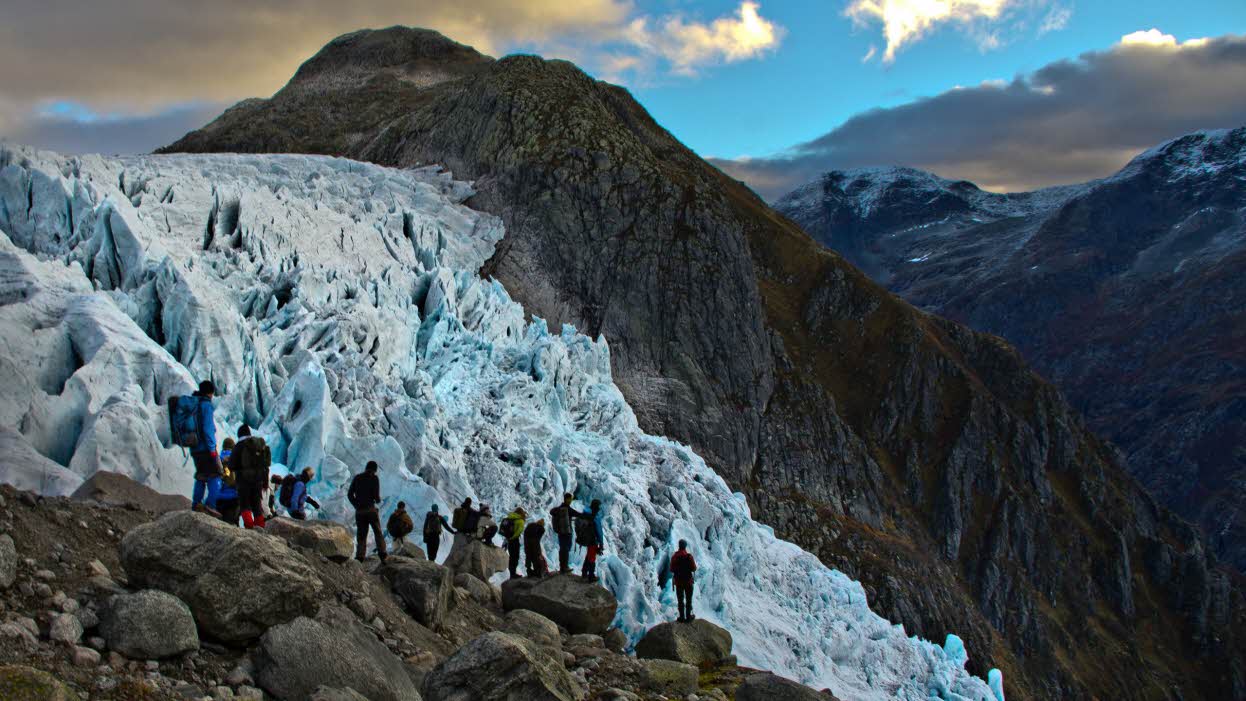
6. Sognefjord — Norway's longest fjord
Mighty Sognefjord extends across much of Western Norway. Norway's longest fjord is 204 kilometres long and is home to both rich culture and breathtaking scenery.
The landscape of Sognefjord is the perfect setting for tranquil fjord cruises, memorable hikes, skiing, fishing and glacier tours. This is mindfulness at its finest.
Sognefjord is also the world's longest ice-free fjord. It extends so far into mainland Norway that it is ends just a few kilometres from Jotunheimen, a mountainous area where you will find most of Norway's highest peaks. Sognefjord is also one of Norway's deepest fjords, being no less than 1,300 metres deep at its deepest point.
No fewer than 30 fjord arms branch off as the glacier wends its way into the mountains of Western Norway. Aurlandsfjord, Nærøyfjord - which features on UNESCO’s World Heritage List, Fjærlandsfjord, Lustrafjord, Sogndalsfjord and Gaupnefjord are just a few of them.
Norway's largest glacier
Some of the valleys which carry on where the fjord ends have a glacier at the end. The fjords that receive the meltwater from the glaciers have a distinctive emerald green colour. This becomes clearly visible when meltwater from the glaciers colours the fjords green.
The largest glacier on the European mainland is the Jostedalsbreen glacier. This glacier is the result of the Little Ice Age and is probably no more than 2,000 years old.
Jostedalsbreen has many glacier arms, three of which extend towards Sognefjord's many fjords. The Bøyabreen glacier extends down to Fjærlandsfjord, but well-known glaciers such as Nigaardsbreen, Tunsbergdalsbreen and Austerdalsbreen are also situated close to Sognefjord.
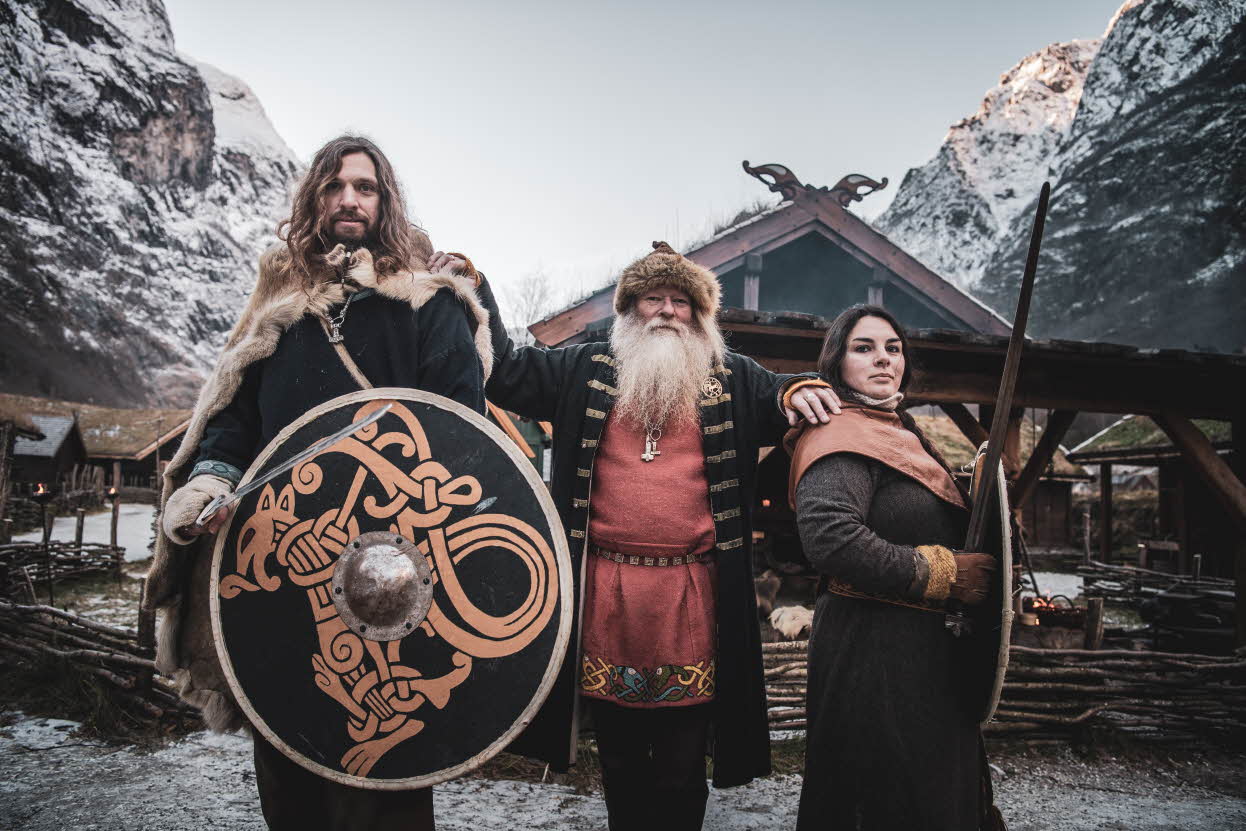
In the land of the Vikings
The word “fjord” is originally Old Norse and means "a place used for passage and ferrying". This is logical enough, because when humans originally settled in Norway after the last ice age, travelling on the water was the only way to get around. Around many of the fjords are relics of both the Bronze Age and the Viking Age.
The fjords along the west coast of Norway were largely ice-free due to the warm water transported there by the Gulf Stream. It made travel by boat possible all year round. The mild climate also made farming possible, there was a plentiful supply of fish along the coast along with excellent opportunities to transport goods to and from the settlements in the fjords and along the Norwegian coast. The hunting was good too, with elk and deer in the forests, and reindeer on the mountains.
It’s perhaps not that surprising that the Vikings liked the western fjords so much. You also did not have to travel very far when it was time to set off on another Viking voyage of discovery.
Viking relics
The Viking Age lasted from around 800 to 1066. In this relatively short period of time, the Vikings managed to leave their mark not only on Norwegian culture, but in Europe too. They are probably best known for warring and looting, as portrayed by “The Vikings” TV series, but the Vikings were just as occupied with trading.
Thanks to their highly efficient vessels and a large helping of courage, not to mention an adventurous spirit, the Vikings actually got as far as Byzantium (modern day Istanbul, Turkey) and traded with the Baghdad caliphate.
Many of them also settled in France, Scotland and Ireland. Others emigrated to Iceland, and Leiv Eiriksson established a settlement on a previously unknown continent when he discovered America around the year 1000.
The Vikings brought back not only riches and slaves with them to Norway, but also Christianity. After the conversion of Norway to Christianity, which began around the year 1000, a number of beautiful and intricate stave churches were built from timber. Some of these are still standing, and three stave churches can be found along Sognefjord: Urnes, Kaupanger and Hopperstad.
The most famous of these is Urnes Stave Church, which is situated at Ornes farm on the shore of Lustrafjord.
Head back in time to the Viking Age
Along the fjords, you will find evidence of trade and settlements. The place names which originate from the Old Norse language, such as Kaupanger, Solvorn and Gudvangen, reveal that the Vikings had their roots here.
if you would like to spend a few hours, a whole day or even longer sampling what life as a Viking was like, this is your chance. Viking festivals, Viking days and Viking markets take place in many towns and villages across Norway.
At Njardarheimr in Gudvangen, deep in Nærøyfjord, you will find a Viking village where you can experience what Viking life was like for yourself.
Here, you can read more about the Viking village in Gudvangen and how to get there.
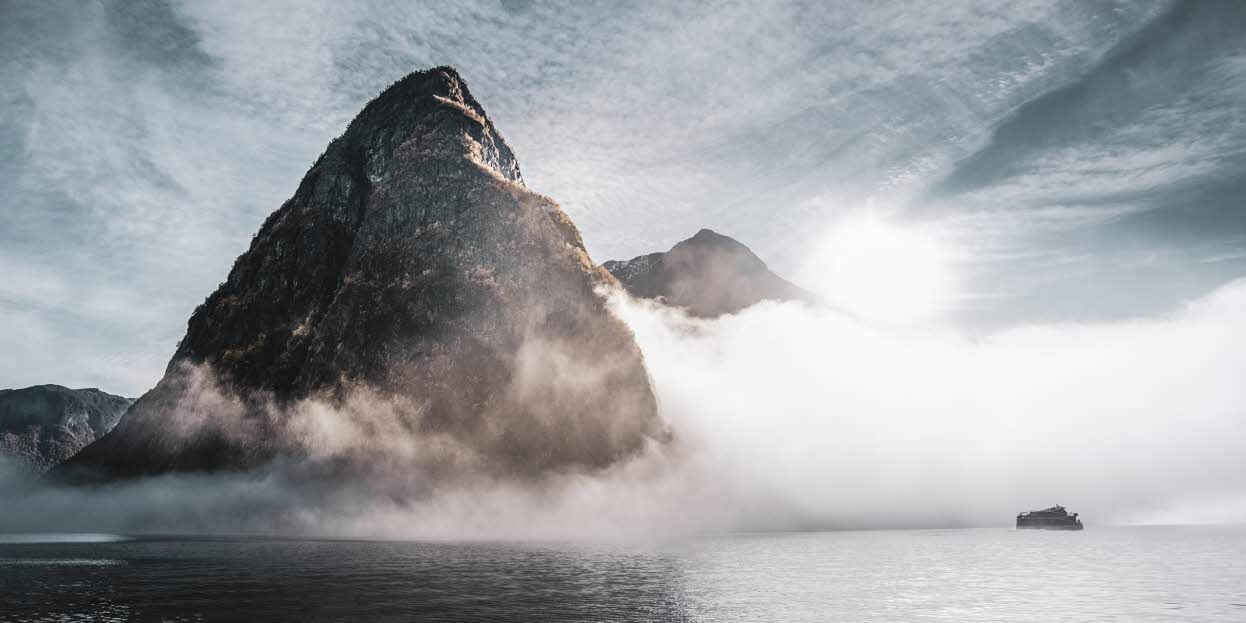
Fjords in Hollywood
If you have yet to see the Norwegian fjords in real life, you might have already seen them in the movies without even realising it. Norwegian fjords have been used as a backdrop to some major film productions.
In 2013, Nærøyfjord was used as inspiration for Walt Disney's "Frost". Folk costumes, buildings, superstitions, trolls, mountains and fjords are all instantly recognisable if you know where to look.
It is almost as if the fjords were made for action. Some of the most intense action scenes in “Mission: Impossible - Fallout”, were filmed in Lysefjord and at Preikestolen in 2018. Here, Tom Cruise fights for his life in an awe-inspiring landscape.
US film companies have visited the Norwegian fjords with a view to filming sequences in productions such as The Avengers and Star Wars.
